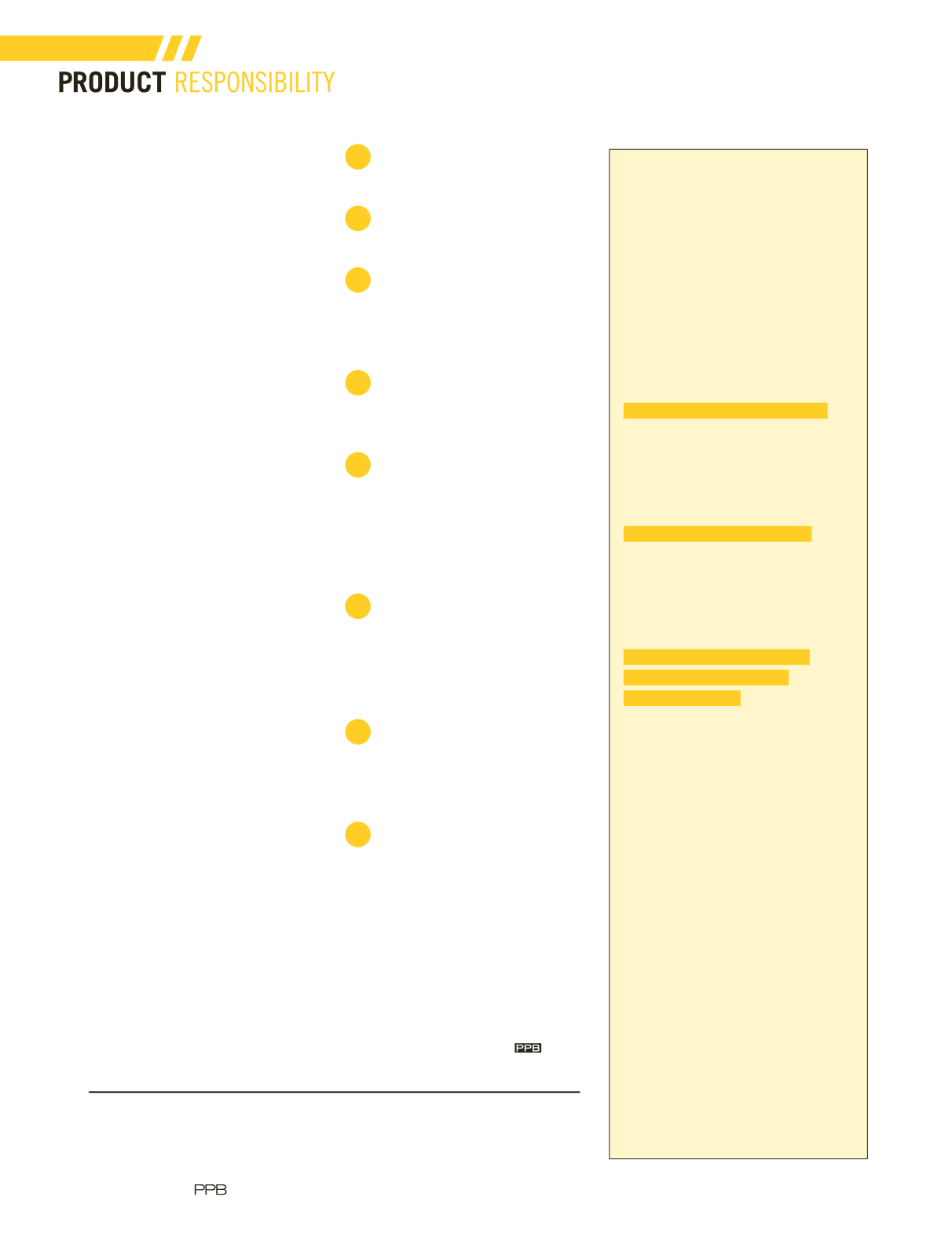

82
|
DECEMBER 2016
|
THINK
Best Practices
And Case Studies
PPAI provides a number of resources
to help member companies maintain
transparency in supply chain
management. These are available at
www.ppai.orgunder the Inside PPAI
tab. Click on Social Responsibility
and see the link on the right.
Distributor Best Practices
• Social Responsibility
Policy for Distributors
• Social Responsibility Audits
of Suppliers by Distributors
Supplier Best Practices
• Social Responsibility
Policy for Suppliers
• Social Responsibility Audits of
Vendors/Factories by Suppliers
Industry Best Practices
for Both Distributors
and Suppliers
• California Supply Chain
Transparency
• Foreign Corrupt Practices
• Principles of Social Responsibility
• Code of Conduct
• Implementing A Social
Responsibility Program
• Pre-Qualifying Assessment of
Vendors/Factories/Suppliers
• Social Compliance Basic
Factory Audit Checklist
• Corrective Action Plans (CAP)
• Social Responsibility
Metrics and Tracking
• Social Responsibility Monitoring
• Sustainability Reporting
• Tariff Act of 1930
• Understanding Code of
Conduct Content
• Product Safety, Social &
Environmental Best Practices
Actions You Can Take
When you are bidding on a
project, the first question you
should ask yourself or the supplier
is this: Is the factory capable of
manufacturing my product at
the capacity at a given schedule?
Understand how and where the
product is being manufactured
and whether or not that work is
being subcontracted. If so, are
those subcontractors compliant
and what is their relationship with
your initial supplier? Understand
how and where the products are
being manufactured, whether
the work is being subcontracted
and, if so, whether those
factories are compliant and
how that relationship works.
Even the most progressive of
approaches to auditing will not
suffice if auditing is all you do—
social compliance is a two-way
street. Building partnerships and
ensuring continuous improvements,
ongoing training and educating
factories about your company’s
specific tolerances to working
conditions at factory levels are
all investments that need to be
made. The message has to be
consistent throughout the process
and there should be no disconnect
between sourcing and compliance.
What can you do when sourcing
to ensure social compliance?
Supplier vetting is by far one of the
most important tools in supplier
management. Knowing a supplier’s
sourcing criteria is something
every distributor should take the
time to understand. Following
are eight key questions to ask:
1
How long has the factory
been in business?
2
When was the supplier’s last
order with this factory?
3
Does the factory have any
social compliance accreditation
such as SMETA 4 pillar, BSCI,
SA8000 SEDEX, etc.?
4
Does your supplier visit the
factory prior to making a
decision to work with them?
5
Does the supplier performa
capability audit to verify if the
factory can handle production, or
does it subcontract out to other
parties that may operate under
questionable working conditions?
6
Does the supplier use a third‑party
accredited agency or have an
internal auditor who verifies
information pertaining to working
conditions at the factory?
7
Does the supplier belong to
a third-party organization
that validates their sourcing
practices and processes?
8
Are audits the only tool that
the supplier uses to verify
factory conditions?
Social compliance is always evolving
so continuously engage your suppliers
in open dialogue about their practices
in regards to onboarding factories.The
responsibility is not only on suppliers
but on every party benefiting financially
throughout the supply chain.
Shamini Peter is director of product safety and compliance for New York,
New York-based distributor Axis Promotions. She serves on the PPAI Product
Responsibility Action Group and was named a
PPB
Rising Star in 2013.
















